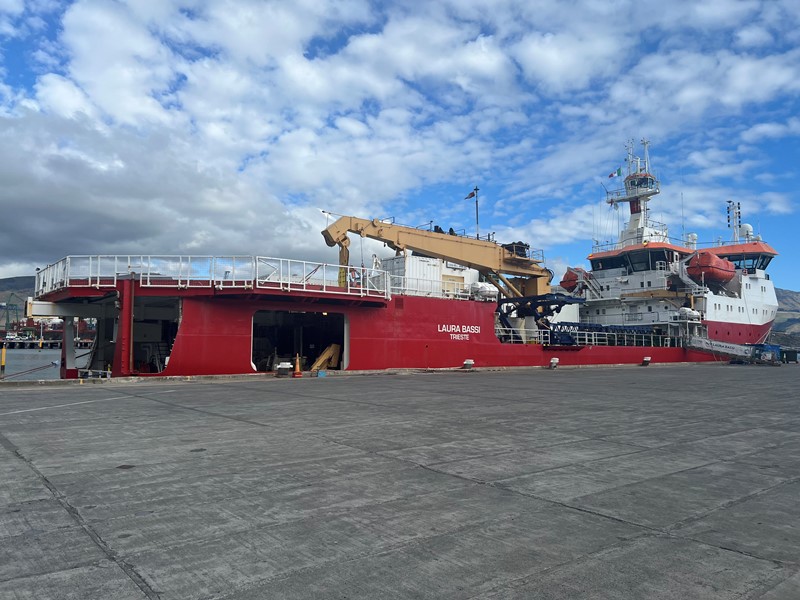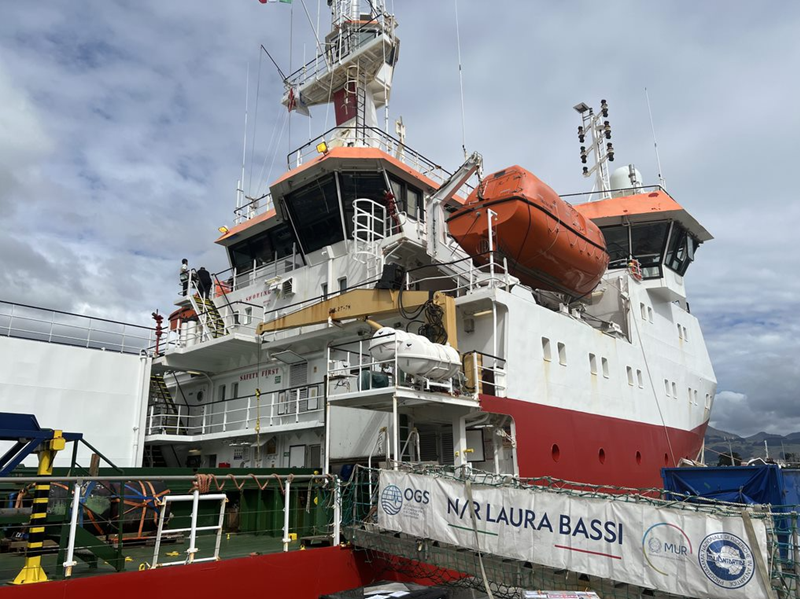Imagine being in charge of history. Or at the very least, responsible for transporting it safely across thousands of kilometres of ocean.

Italian research vessel, the Laura Bassi, and her Antarctic crew are just that. Last week, they left Lyttelton Port bound for Italy with what could be the earth’s oldest ice cores holding stories of our climate history and valuable data that multiple research groups across the globe want to get their hands on.
This precious cargo is for the Beyond EPICA - Oldest Ice Project, a multinational effort of 12 institutes from 10 nations and data that is shared among the 39 countries of the Antarctic Treaty. It’s a collaboration defined by shared scientific goals and open access where scientists can apply to receive samples or data from the ice cores.
Global perspective
Antarctica is a laboratory and working together within it is vital. When scientific data belongs to everyone, it creates a comprehensive global lens on climate history and accelerates a collective understanding of the planet’s future.
Collaboration happened before the Laura Bassi even left port in Trieste, Italy to make her way south. Multinational geophysics teams worked together to identify the best drilling sites and specialised research equipment was shared across several global companies, including the containers needed to transport the ice cores. Then, scientists and researchers got onboard the Laura Bassi and travelled to Antarctica. The officers of the vessel are ice breaking experts, enabling the researchers to reach ice drilling sites safely and drill as deeply as possible to history.
Looking into the past to see the future
It is estimated that the first 2400 metres of ice captures 1.2 million years of data, with each metre representing about 13,000 years. The last 400 metres may cover around 300,000 years. How can ice cores hold so much history? The ice encloses small bubbles of air that contain samples of the atmosphere where past concentration of atmospheric gases — including the major greenhouse gases: carbon dioxide, methane and nitrous oxide — can be measured and see the way it has changed over time. The ice tucked up on Laura Bassi currently crossing the Indian Ocean, has 1.5 millon years of stories to tell.

Culture and storytelling
Collaboration, scientifically and logistically, is essential. As one of the world’s five Antarctic Gateway cities, Ōtautahi Christchurch is part of this shared commitment to science and the city welcomes all international Antarctic programs on their way to and from the ice. The Laura Bassi’s stop at Lyttelton Port was not just for logistics sake, it was an opportunity to connect and share meaningful stories.

It was fitting that representatives from Ngāti Wheke, Antarctica NZ, COMNAP, Lyttelton Port Company, ChristchurchNZ and the Italian Consulate went aboard Laura Bassi while she was in dock. Captain Franco, with years of experience navigating extreme environments like Antarctica, shared stories of the ice. It was something that resonated with leaders from Ngāti Wheke who acknowledged the importance of storytelling in both cultures and how the science links to Aotearoa. With the data, we can gain greater understanding of the effect of urbanisation, and ecosystem resilience to see a clearer picture.


